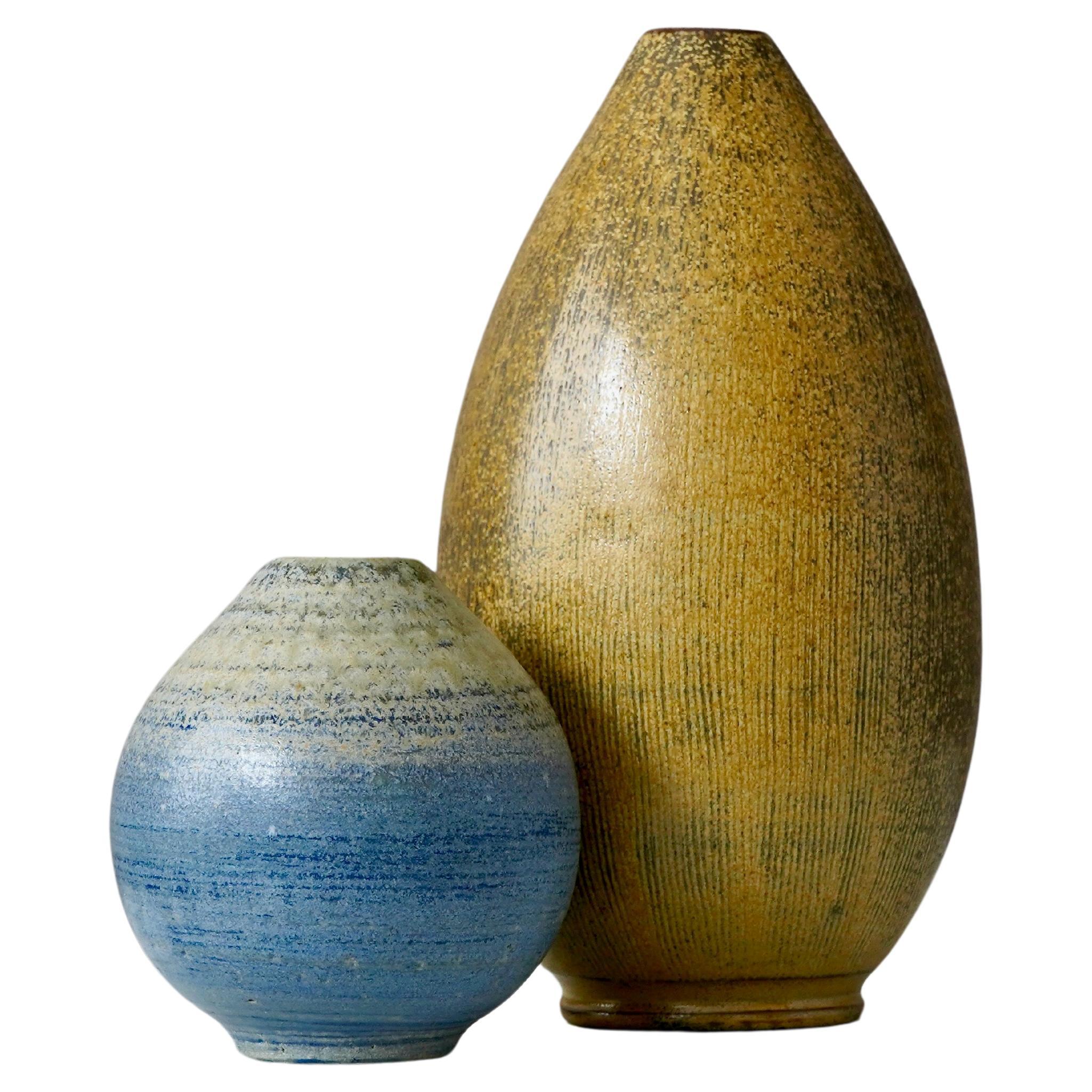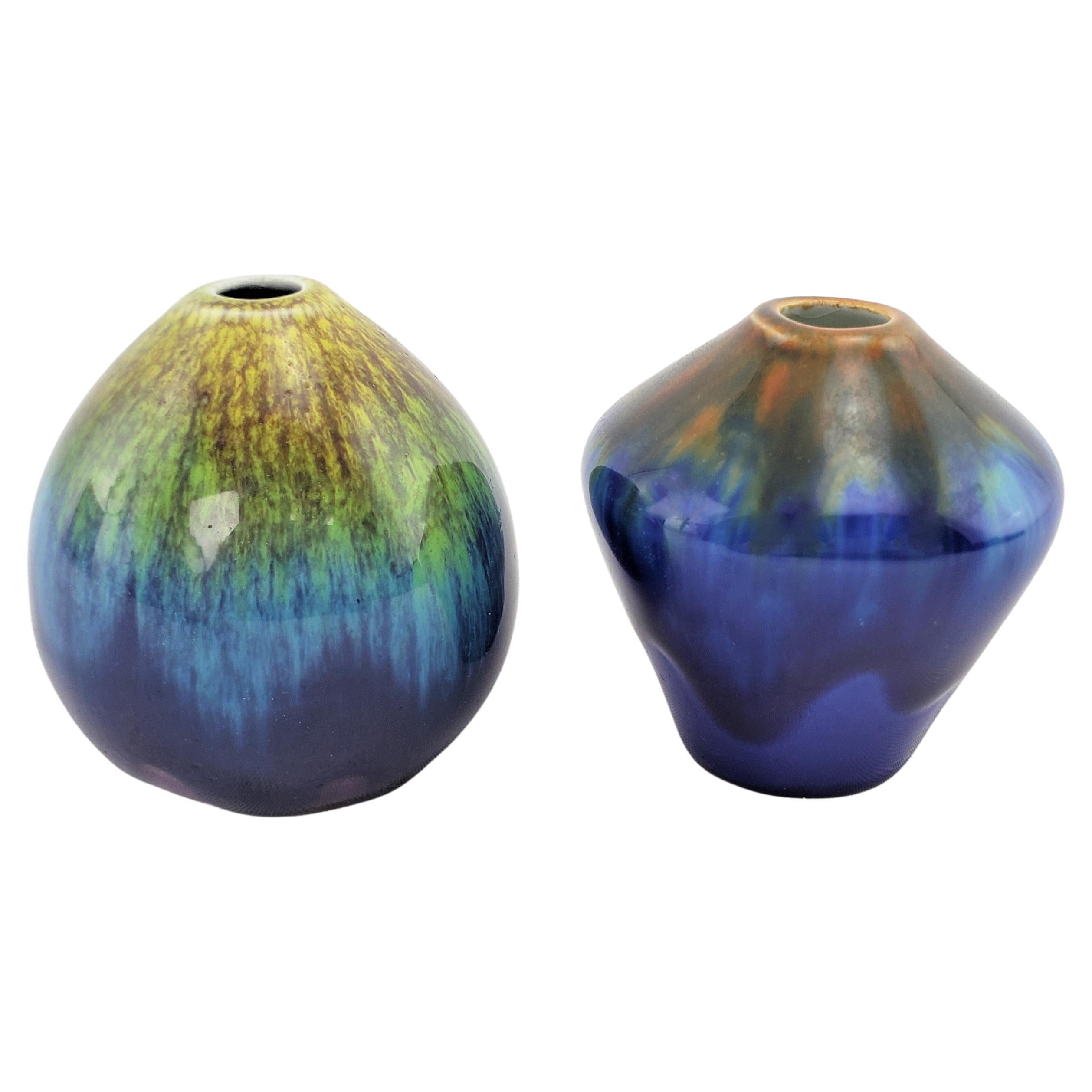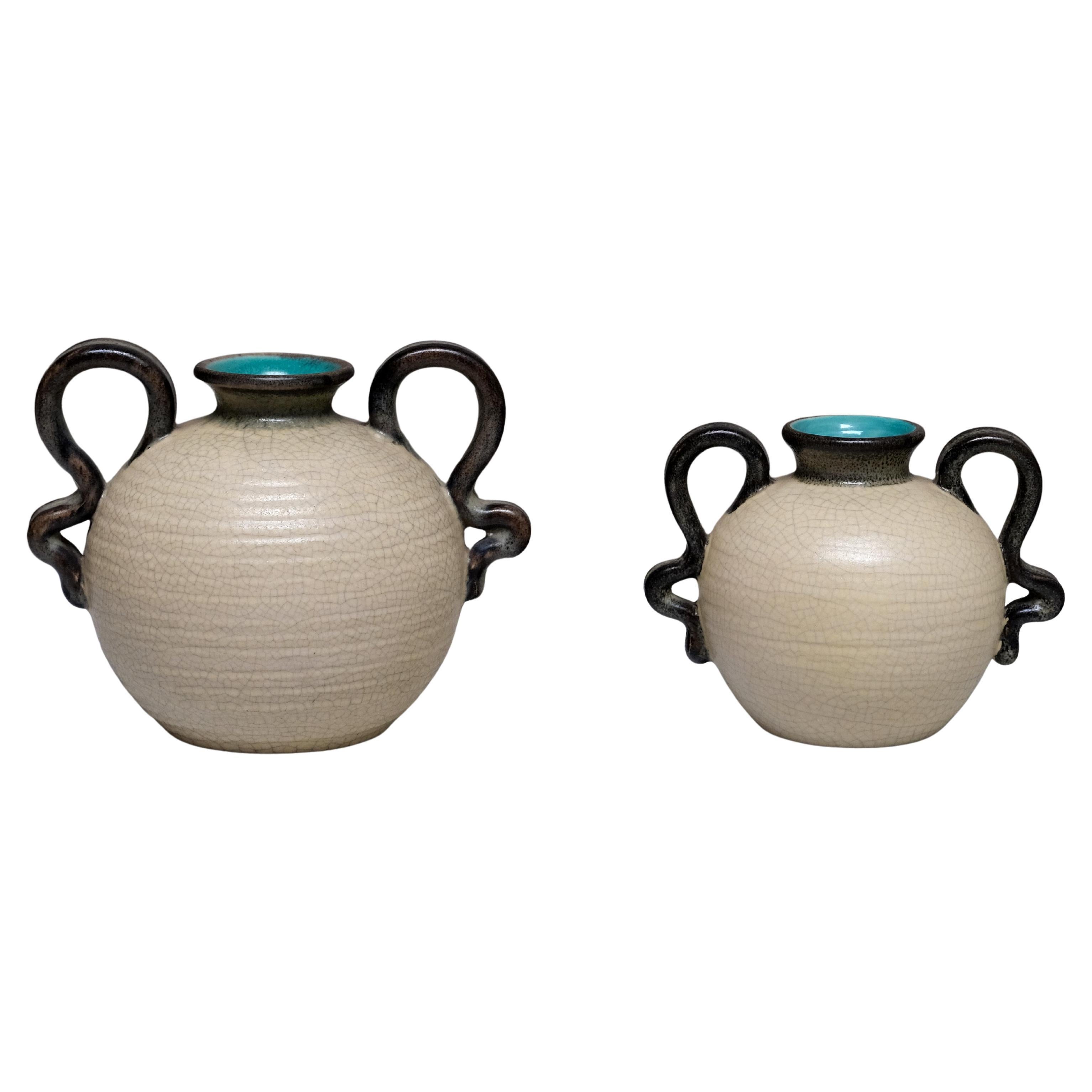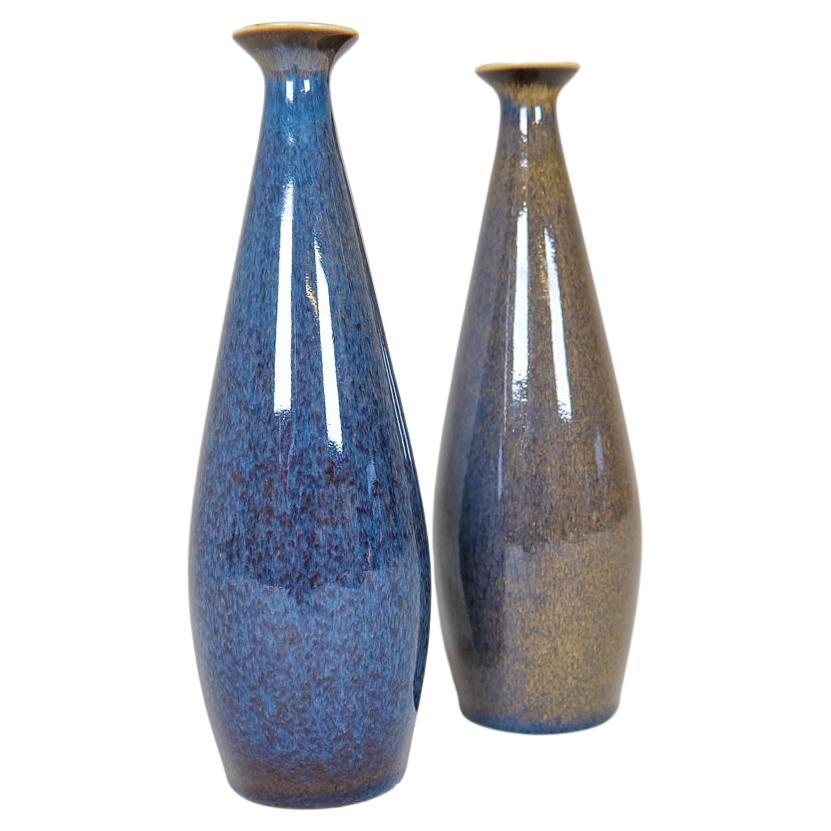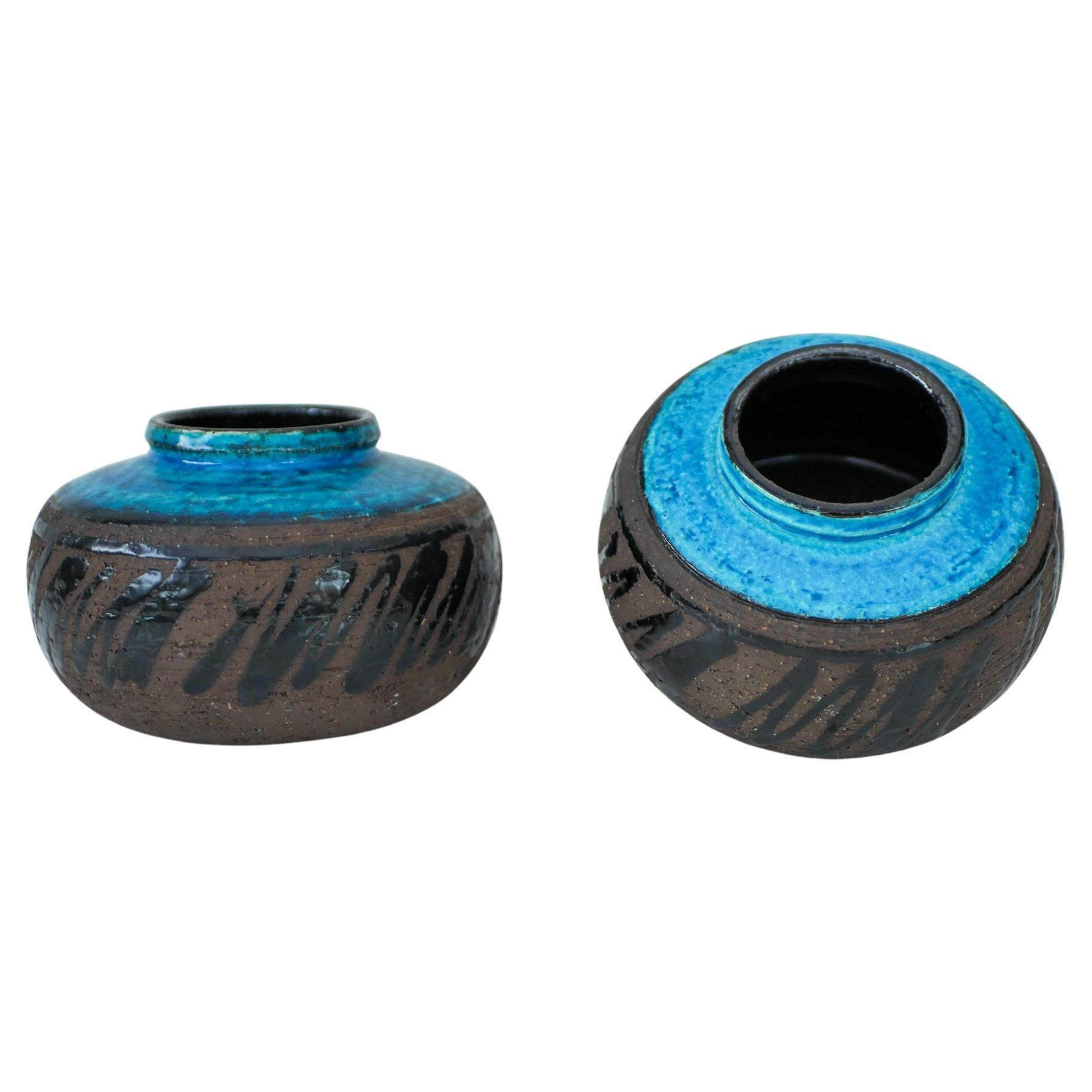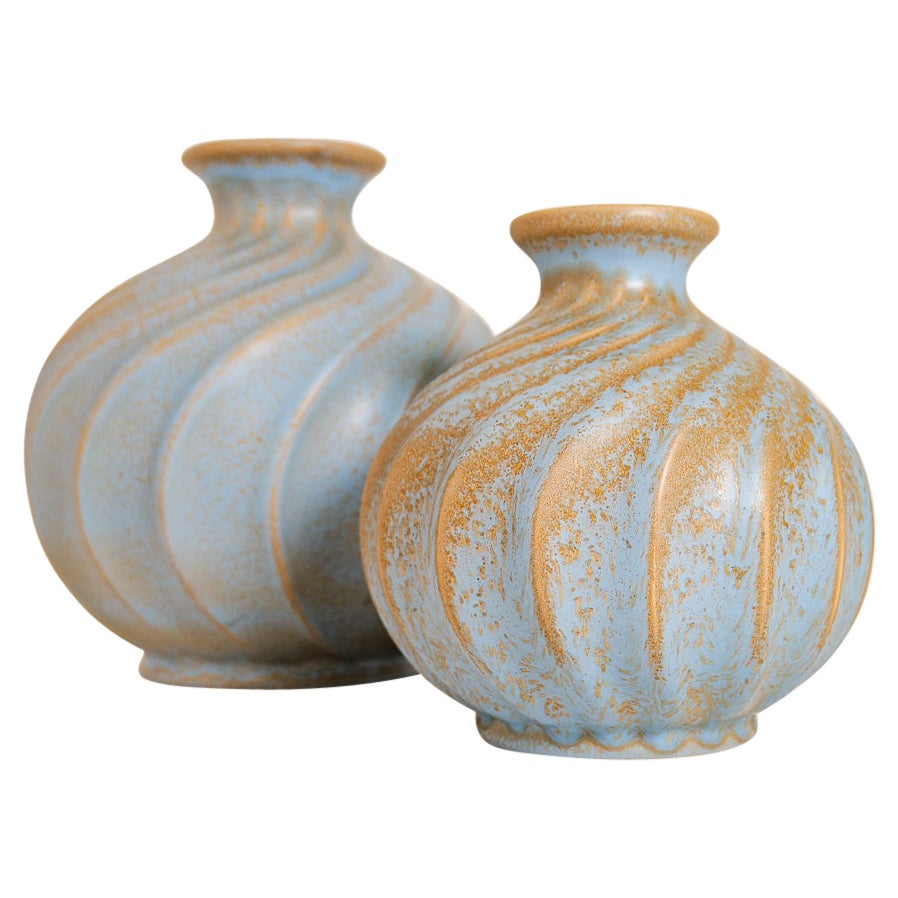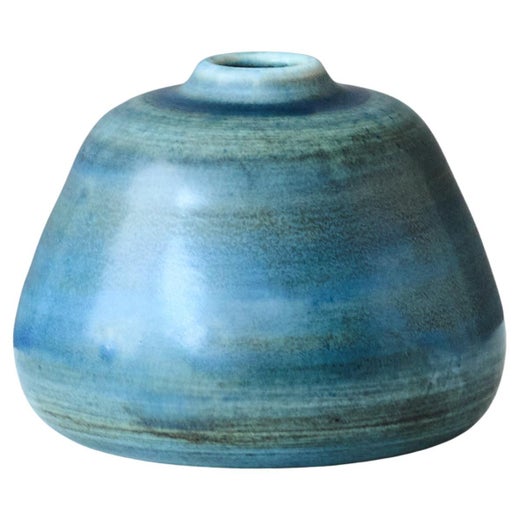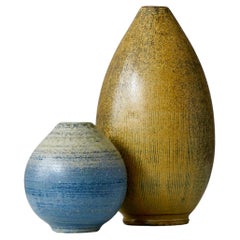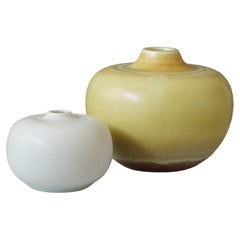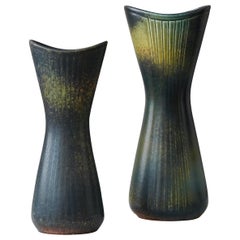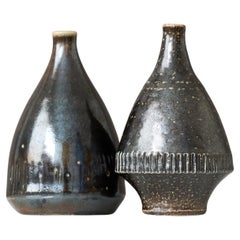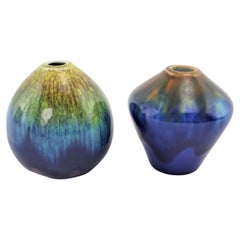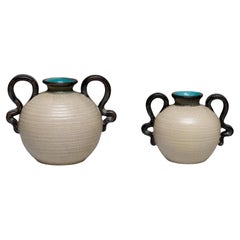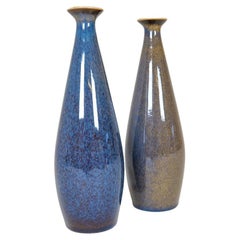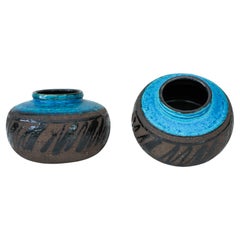Set of 2 Stoneware Vases by Hertha Bengtson. Rorstrand, Sweden, 1950s.
About the Item
- Creator:
- Dimensions:Height: 5.12 in (13 cm)Diameter: 4.73 in (12 cm)
- Sold As:Set of 2
- Style:Scandinavian Modern (Of the Period)
- Materials and Techniques:
- Place of Origin:
- Period:
- Date of Manufacture:1950s
- Condition:Wear consistent with age and use.
- Seller Location:Malmö, SE
- Reference Number:Seller: 841stDibs: LU8317235471592
Rörstrand
Before Rörstrand and its contemporaries introduced ceramic serveware to Europe, people primarily ate off of metal plates. The Swedish ceramics company was pivotal in bringing porcelain from China to the Western world, and today, vintage Rörstrand ceramics are highly prized by collectors.
The company began in 1726 at Rörstrand Castle in Stockholm, under the direction of master porcelain maker Johann Wolff. Early works bore no stamp or seal to mark their origin, as the company had no competitors at the time. Once competing companies made inroads into the porcelain market, Rörstrand began to stamp its products.
With the rising demand for ceramic tableware, Rörstrand pieces filled the cabinets in the houses of the nobility, royalty and the social elite of Sweden and surrounding nations. The 1800s saw many technological advances for the company, as it began using steam presses to emboss patterns into material. The 20th century brought the company to international markets after it presented its Art Nouveau pieces at the 1900 World Exposition in Paris.
As Sweden was a neutral country during the world wars, Rörstrand was able to continue producing, whereas other companies shut down or shifted to making items for the war effort. Swedish artist-designer Gunnar Nylund created his most famous works — warm-toned matte-glazed Art Deco stoneware and more — while employed by Rörstrand. During the 1950s, Rorstrand brought on master porcelain maker Marianne Westman, lovingly referred to as “the Porcelain Mother.” Her design, the Rörstrand Mon Amie, became one of the company’s leading sellers. It was among many popular designs that she and her team developed. Westman continued with the company through the 1960s when it brought on other notable talents, such as designer Inger Persson.
In 1976, the company celebrated 250 years, and the Rörstrand Museum opened in Lidköping, holding over 15,000 pieces created by the historic ceramics manufacturer.
With almost 300 years of history, Rörstrand has survived numerous shifts in culture and design preferences, maintaining its heritage style, while smoothly adapting to new trends. With each decade, the company has debuted new designs, glazes, patterns and technologies, bringing new innovations and intriguing twists to traditional work.
Find vintage Rörstrand serveware, decorative objects, lighting and more on 1stDibs.
- ShippingRetrieving quote...Shipping from: Malmö, Sweden
- Return Policy
More From This Seller
View AllMid-20th Century Swedish Scandinavian Modern Vases
Ceramic, Stoneware
Mid-20th Century Swedish Scandinavian Modern Vases
Ceramic, Stoneware
Mid-20th Century Swedish Scandinavian Modern Vases
Ceramic, Stoneware
Mid-20th Century Swedish Scandinavian Modern Vases
Ceramic, Stoneware
Mid-20th Century Swedish Scandinavian Modern Vases
Ceramic, Stoneware
Mid-20th Century Swedish Mid-Century Modern Vases
Ceramic, Stoneware
You May Also Like
Mid-20th Century Swedish Mid-Century Modern Vases
Pottery
Vintage 1930s Swedish Scandinavian Modern Vases
Ceramic
Vintage 1950s Swedish Mid-Century Modern Ceramics
Ceramic
Vintage 1960s Swedish Mid-Century Modern Vases
Ceramic, Stoneware
Vintage 1930s Swedish Art Deco Ceramics
Ceramic
Vintage 1930s Swedish Scandinavian Modern Vases
Ceramic
